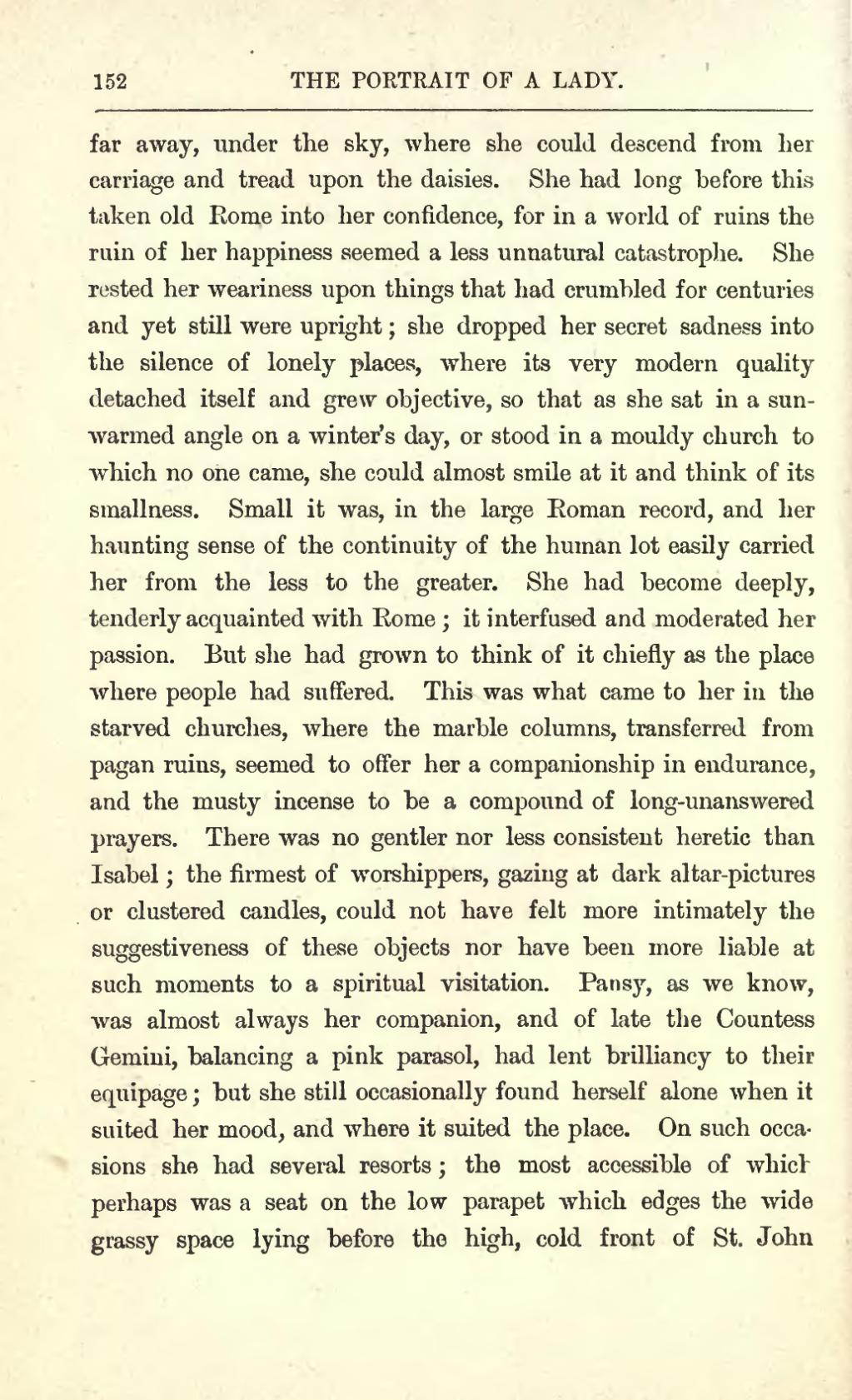far away, under the sky, where she could descend from her carriage and tread upon the daisies. She had long before this taken old Rome into her confidence, for in a world of ruins the ruin of her happiness seemed a less unnatural catastrophe. She rested her weariness upon things that had crumbled for centuries and yet still were upright; she dropped her secret sadness into the silence of lonely places, where its very modern quality detached itself and grew objective, so that as she sat in a sun-warmed angle on a winter's day, or stood in a mouldy church to which no one came, she could almost smile at it and think of its smallness. Small it was, in the large Roman record, and her haunting sense of the continuity of the human lot easily carried her from the less to the greater. She had become deeply, tenderly acquainted with Rome; it interfused and moderated her passion. But she had grown to think of it chiefly as the place where people had suffered. This was what came to her in the starved churches, where the marble columns, transferred from pagan ruins, seemed to offer her a companionship in endurance, and the musty incense to be a compound of long-unanswered prayers. There was no gentler nor less consistent heretic than Isabel; the firmest of worshippers, gazing at dark altar-pictures or clustered candles, could not have felt more intimately the suggestiveness of these objects nor have been more liable at such moments to a spiritual visitation. Pansy, as we know, was almost always her companion, and of late the Countess Gemini, balancing a pink parasol, had lent brilliancy to their equipage; but she still occasionally found herself alone when it suited her mood, and where it suited the place. On such occasions she had several resorts; the most accessible of which perhaps was a seat on the low parapet which edges the wide grassy space lying before the high, cold front of St. John
